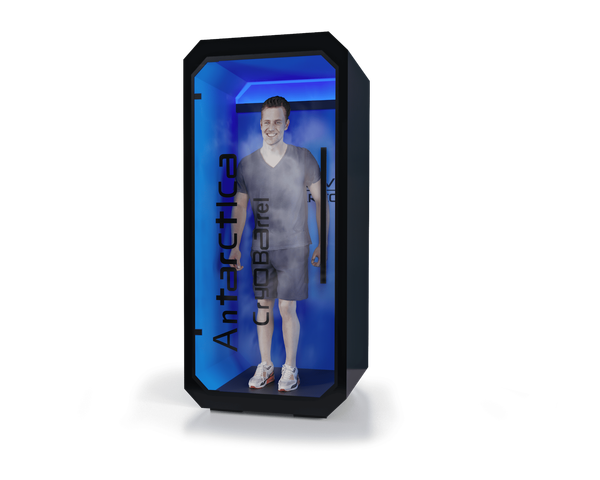Navigating the Crossroad of Healthcare IT and Data Engineering
Table of Content
When healthcare IT meets data engineering, patient care and medical research are poised to interact and intertwine in ways not previously seen. The integration of these fields is creating new opportunities for innovation in health services, allowing professionals to deliver more personalized and efficient care, and giving patients the promise of better outcomes as a result.
This synergy opens up myriad possibilities, so hold tight as we put a magnifying glass over the ways in which data-driven strategies are advancing healthcare processes and enabling operational efficiencies.
How Data is Used in Modern Healthcare
Data is the defining factor of all industries and sectors, and over the course of 2024 it’s expected that at least 147 zettabytes of digital information will be generated globally. In a healthcare context alone, the market for data analytics is predicted to be worth $121 billion by the end of the decade.
As such, providers are rapidly adopting sophisticated data engineering techniques to improve many facets of the work they do. Here's a closer look at how data drives significant advancements in healthcare:
Predictive Analytics
By analyzing patterns from massive datasets, healthcare providers can predict patient risks and outcomes with higher accuracy.
For instance, predictive models empowered by machine learning are used to forecast chronic disease flare-ups, allowing interventions to be more proactive rather than reactive. Given that those who suffer from persistent conditions can face care costs equivalent to 70% of their income, perpetuating preventive measures with predictive analytics is clearly a plus point.
There are even predictive models that cut emergency room wait times by 15%, which is a positive for patient experiences and also deals with capacity issues encountered in many hospitals internationally.
Enhanced Patient Care
Leveraging real-time data translates into better patient care practices. Electronic Health Records (EHRs) integrated with AI algorithms can suggest customized treatment plans based on individual health data.
For instance, one study in the UK showcased that integrating real-time health monitoring devices with EHR can decrease heart attack patient readmission rates by 76%. This goes hand in hand with the rise of telemedicine, indicating that data engineering is just one of several technological breakthroughs having its impact felt in healthcare right now.
Operational Efficiency
Data engineering helps streamline various operations such as inventory management, staff allocation, and appointment scheduling within healthcare facilities. That’s why anyone who’s interested in becoming a certified data engineer will have their pick of appealing positions across the healthcare spectrum, and not just in a big business context as you might have expected.
In particular, implementing advanced data analytics for supply chain optimization results in major savings for health systems - and this proved particularly useful during the recent pandemic. McKinsey points out that 40% of external costs in this sector come down to functions of the supply chain - and so optimizations here can slash spending needs by as much as 10%.
In short, the integration of robust data engineering strategies enhances analytical capabilities and also empowers healthcare providers to offer more precise and effective care solutions. These improvements extend beyond clinical applications, and can optimize the entire ecosystem if applied appropriately.
The Challenge of Guaranteeing Secure and Ethical Data Integration
As healthcare IT and data engineering continue to merge, several obstacles must be overcome in order to harness the full potential of this integration while maintaining security and ethical standards. Here are some key issues along with strategies to address them:
Data Security
With great amounts of data comes great responsibility, so providing both privacy and security is a bare minimum. And given that 133 million patient records ended up in the wrong hands as a result of breaches in 2023 alone, it’s clear that there is still a significant hole that needs to be plugged here in many healthcare organizations.
There are a lot of ways to go about this - such as by encrypting patient data both at rest and in transit, which has become a norm in most hospitals as a means of minimizing exposure to breach attempts. That’s not to say every organization gets this right every time, but that at least there are tools that are available to fight back against the threats to security which exist in large numbers.
Regulatory Compliance
Adhering to stringent regulatory requirements like HIPAA compliance in the U.S or GDPR adherence in Europe is another must for legal operation. Given that fines for HIPAA violations have risen to $137 per violation - with maximum annual penalties of $1.5 million - this is as much about ongoing financial viability as it is patient protection.
In response to compliance demands and the threat of punitive action, many healthcare providers utilize sophisticated auditing tools that automatically track access and modifications to sensitive information.
Ethical Use of Data
Another part of the balancing act of data use is to weigh the drive for innovation against the ethical implications of using personal health information (PHI).
This is not just about privacy, but also biases in big data when applied to healthcare scenarios. One report highlights the discrepancies in how a patient referral algorithm was prioritizing patients for specialized care based on their ethnicity, and that tweaks made once this issue were discovered resulted in minority patient referrals rising to 47%.
Addressing these challenges requires meticulous planning, advanced technological solutions, and ongoing workforce training.
By overcoming these hurdles, healthcare facilities can safeguard patient information against breaches and misuse while effectively utilizing data for better health outcomes - in addition to raising awareness about the risks of bias that can come with unadulterated automation, requiring additional oversight.
Enhancing Interoperability in Healthcare Systems
Another impactful component of effectively implementing healthcare IT and data engineering is ensuring systems can communicate seamlessly - which is a process that’s more commonly known as interoperability.
The integration of disparate healthcare information systems can prevent data silos, enabling comprehensive analysis and avoiding the average cost of bad data that Gartner estimates to be $12.9 million for larger organizations.
Here's how interoperability is being tackled:
Standardization of Data
Adopting universal coding standards like HL7 or FHIR ensures that different systems can understand and use shared data efficiently.
Many electronic health record (EHR) systems now incorporate FHIR standards, facilitating better data exchange between different healthcare providers.
Effective standardization has been shown to reduce clinical errors, largely due to improved consistency in patient information across platforms. Meanwhile the use of matching algorithms allows for a 90% match rate, even in contexts where a unified system does not exist.
Cloud-Based Solutions
Cloud services offer scalable options for storing and accessing large datasets while supporting interoperability across multiple healthcare applications.
Cloud-based platforms like the Google Cloud Healthcare Data Engine provide tools that harmonize data from various sources, making it easier for healthcare professionals to access unified patient records - with AI integration taking this to the next level.
Collaborative Frameworks
Forging partnerships among tech developers, healthcare institutions, and regulatory bodies helps advance interoperable solutions that benefit all stakeholders.
For instance, the CARIN Alliance is an initiative aimed at promoting the ability of consumers and their authorized caregivers to easily obtain digital health records regardless of the platform used.
Wrapping Up
Data engineering in a healthcare context is clearly something that deserves more attention, especially as it is a relationship that’s becoming more complex and crucial day by day. For professionals in either sphere, collaboration and recognition of the challenges from a security and ethics perspective will lead to great things - while patients can simply sit back and reap the benefits.










